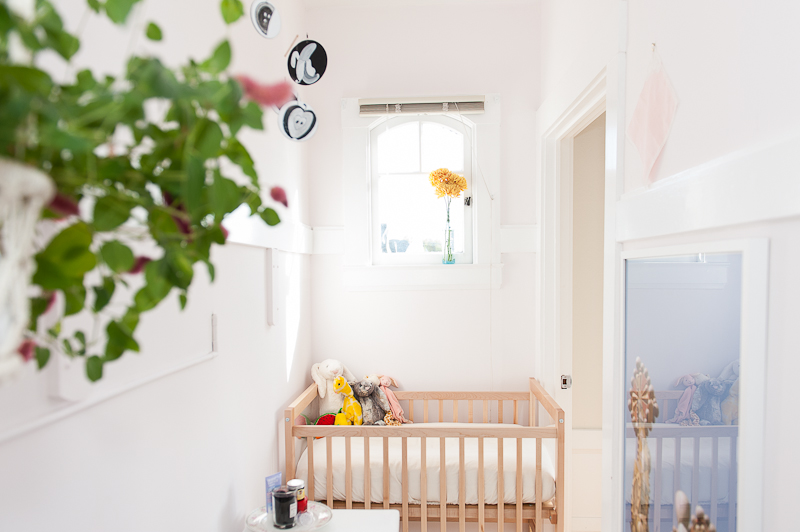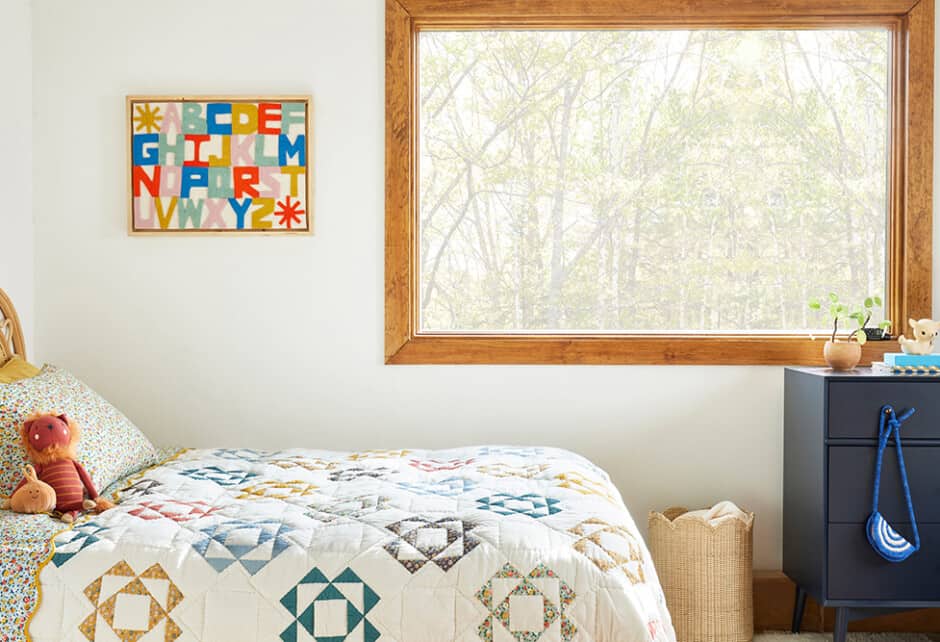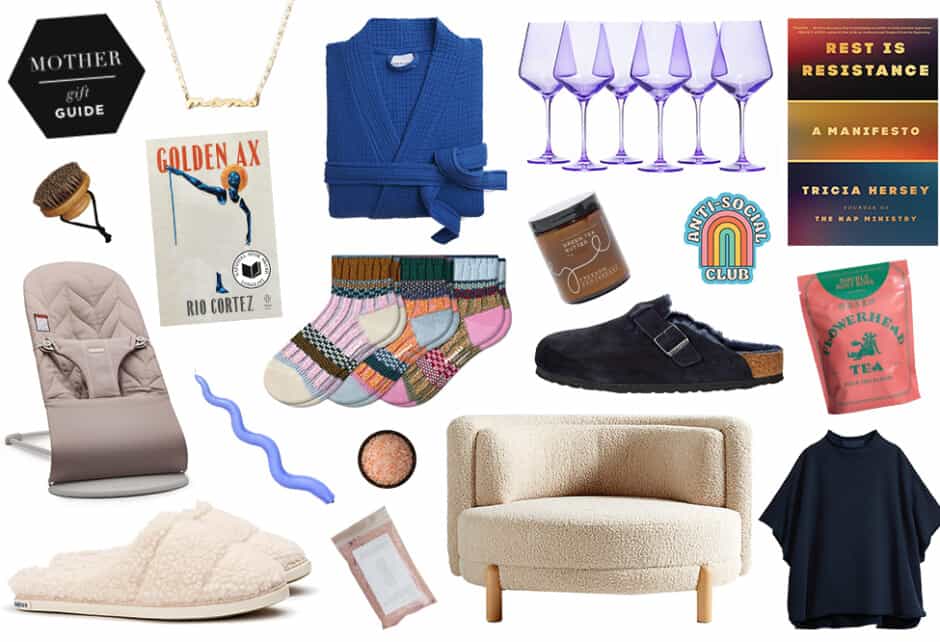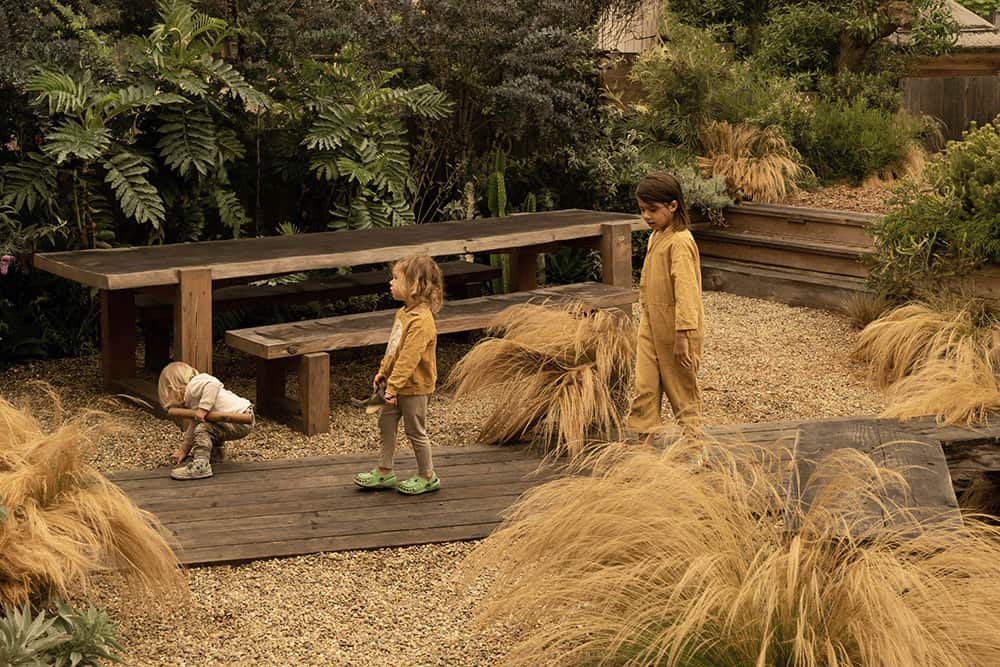
Tips For Turning Your Backyard Into A Family Oasis
Written by Katie Hintz-Zambrano
Photography by Photographed by Cass Cleave
Now that being locked down at home is essentially a way of life, many of us are looking to expand our living quarters into our backyard spaces (if we are lucky enough to have them). One person who knows all about bringing life and utility to the outdoors is Molly Sedlacek, the second-generation landscape designer behind OR.CA Design (the name is a nod to Molly’s Oregon hometown roots and current residence in California, respectfully).
Inspired by her mother Lisa Walter-Sedlacek—a trailblazer in a primarily male-dominated construction industry—Molly created OR.CA as an outdoor design and product studio that creates one-of-a-kind landscapes “for a life without walls.” The company’s awe-inspiring projects (which you can peep on Instagram) are incredibly unique, practical, and sustainable thanks to a variety of factors.
OR.CA sources the materials for its projects with a light footprint top of mind. The wood and stone they choose is sourced as local to the jobsite as possible. The plants chosen have a wild, overgrown quality, often native to support local fauna. The design team collaborates with skilled artisans and fabricators for hand-crafted and one-of-a-kind pieces. They also like to keep their materials as organic and raw as possible, minimizing the use of concrete and synthetic materials. As Molly says, “Our materials should reflect how nature intends them to be.”
You might recognize OR.CA‘s work from the covetable outdoor space of San Francisco mama of three Surya Kishi-Grover, whom we profiled last year—and whose artfully undone OR.CA creation is once again shown here.
To get some advice on how you can start building your own dreamy backyard oasis, as well as hear more details on Molly’s inspired design process and the vision behind OR.CA, read through our Q&A with the founder, below!
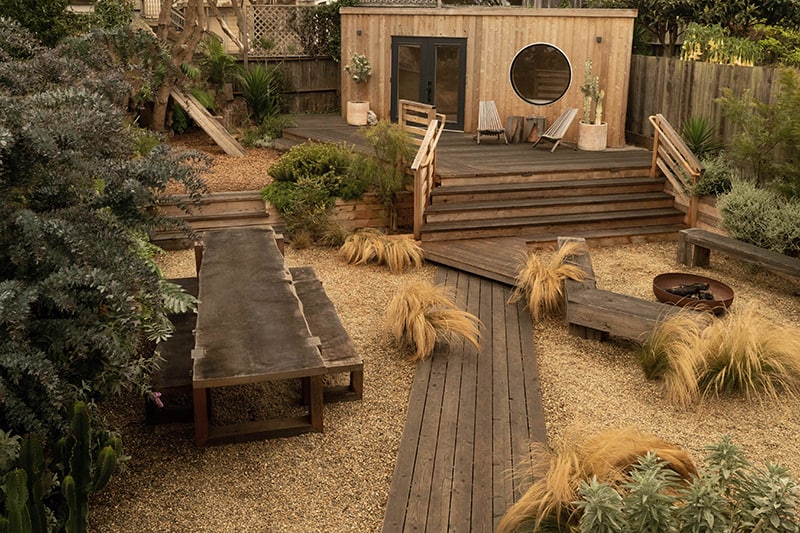
What was your professional background before starting OR.CA?
“I worked in sustainable textiles for the majority of my career, doing art direction and creative production. I have always been melding intentional dwelling spaces and organic materials. To me, these two things together create an indescribable feeling of sanctuary.”
How did OR.CA first come to be?
“My mother Lisa-Walter Sedlacek is a landscape designer and contractor. Her work always reflected the softness of botany and design, contrasted with the rigidity of building. It’s a delicate balance that I innately learned through her. Soft and hard, which is something I balance as a female small business owner everyday.”
“I started OR.CA by way of a personal garden in San Francisco. I built the landscape in a way that allowed me to learn what materials worked together and what compositions felt right to my eye. I observed my dog Charlie taking specific paths based on what felt comfortable to his paws. I watched myself bask in certain corners on select materials, and how the bamboo hedge composed an audible journey near a reading nook. I learned how senses and rituals were heightened through the design. Friends would dine in the garden and ask, can you create this for us? My answer is always yes. Nothing brings more joy than creating living spaces that connect us to nature.”
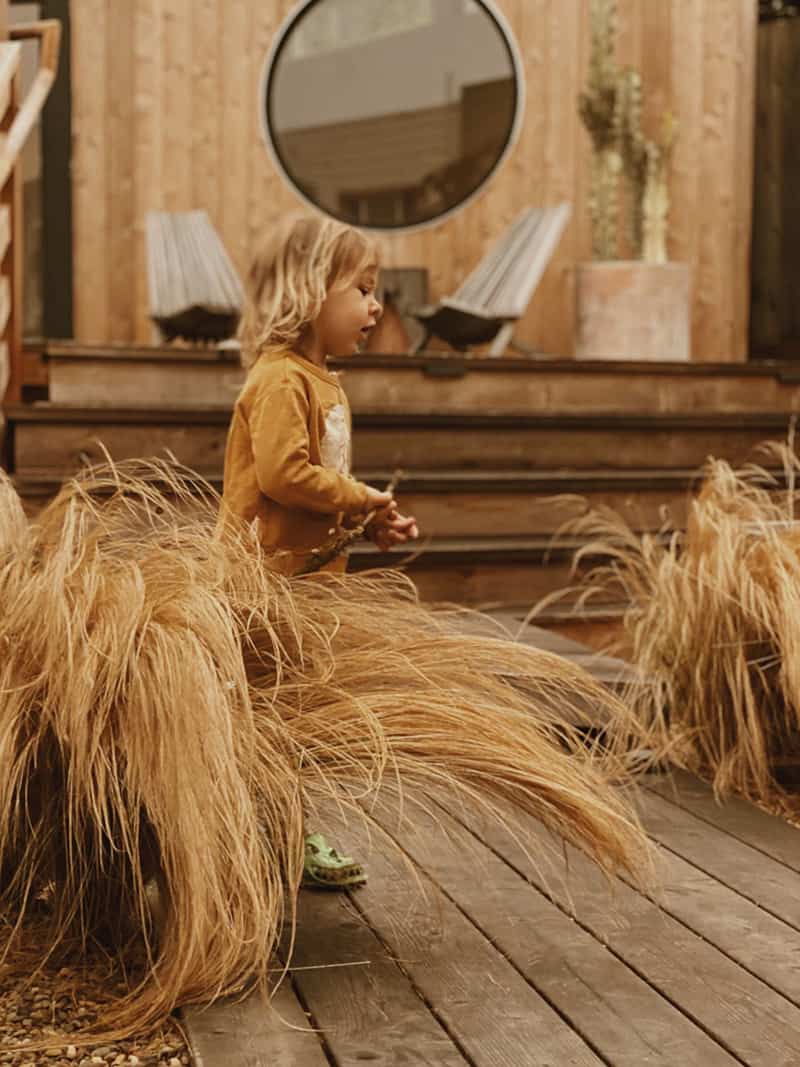
With a mother who was a landscaper, what was your upbringing like?
“My earliest memories are creating forts in a Bay Laurel hedge on the Oregon coast. The leaves were the flooring, the branches, my roof. The use of these raw materials as a child was sheer resourcefulness and is now our driving design principal. I am a gatherer by means of my father. Any materials we found growing up that had character and spoke to us became a part of our home. Heavy objects such as driftwood burls and boulders were always in the bed of the truck. This fundamental relationship to materials is what allows OR.CA to remain unconventional and unrefined: a feeling of found.”
Looking at the projects you’ve completed is so inspiring. For folks looking to design their own outdoor spaces, can you break down the steps one would need to take?
“The first and most important part of any outdoor space is function. If you don’t create a space that supports your lifestyle, the design has fallen short. One of my first questions I ask clients is how many people sit at their dining table. Thinking through how you use a space will help prioritize use of land, budget, and materials. We are passionate about fewer, better pieces in a garden. This speaks to handmade over mass produced and having local materials and craftsmen build our furniture. It is more of an investment up front, but the life you will get out of the piece is worth every penny.”
“After planning the use of a space, consider how your needs may evolve. If you plan on a kid’s play area, choosing materials that patina well and a layout that can evolve allows for a sustainable landscape. Sustainable design to us means the materials and the usage are enhanced with time.”
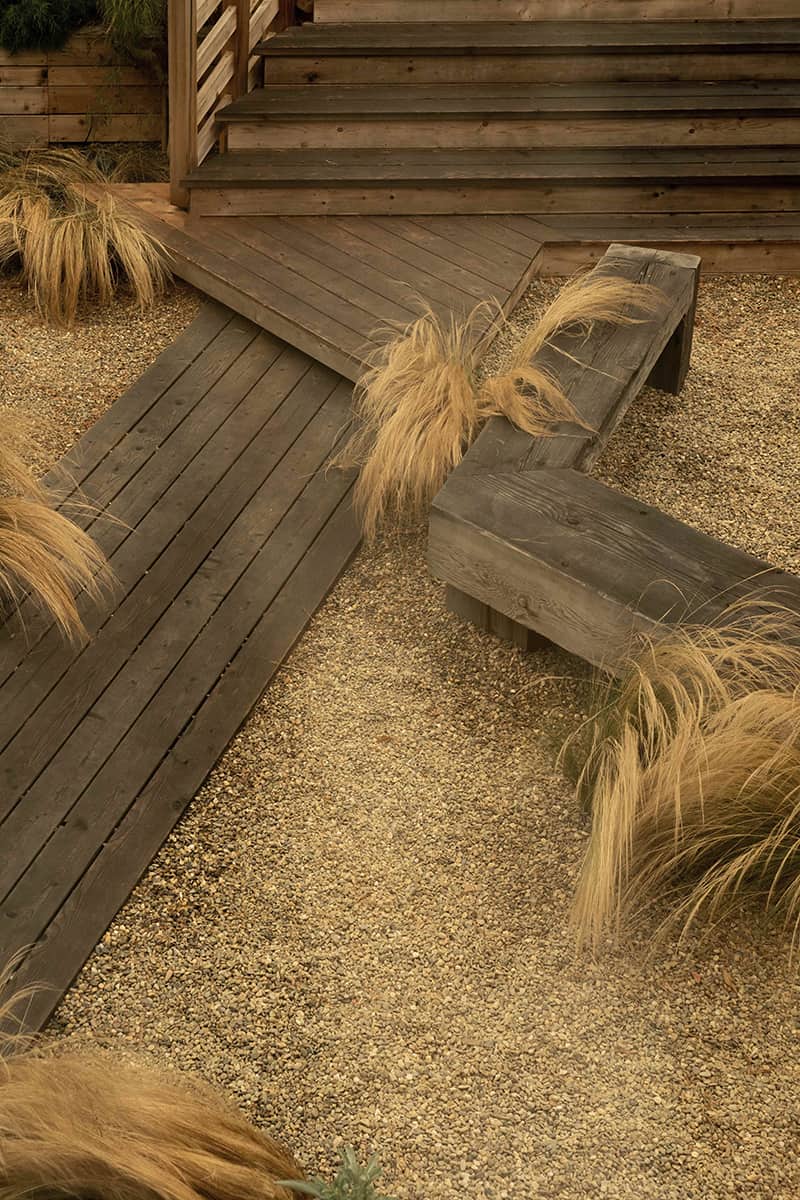
Are there any common mistakes that folks should look out for before or during their project?
“Gardens are ever changing. Plants die, wood checks, edges ease, metal rusts. And it’s a beautiful thing. Understanding how materials behave is one of the most important parts of planning so as a garden settles in, the evolution of the space tells the story you anticipate. Some of our projects are from a maintenance-less perspective, while other clients love being in the garden and tending to its changes. The OR.CA aesthetic is more on the untamed side, and I tend to like gardens most when they look wild and untouched.”
When it comes to families and backyard spaces, what have been some of your favorite design elements to incorporate?
“I love playing with proportions and using volume to juxtapose the delicacy of plants. For example, a slab of Douglas Fir that’s double the thickness you expect it to be, paired with the lacey shadows of Daucus Carota. Voilà—unexpected friends! We use local softwoods such as old growth redwood and Northern California cypress for furnishing. An area where people gather should always have meaning to it, and trees tell beautiful stories.”
“We also source stone from family-owned quarries. The slabs highlight the complexity and beauty of rock found in proximity to our western mountain ranges. The relationship to our materials and where we source them is the cornerstone of our work. OR.CA is fortunate to have an incredible design and fabrication team, which is what allows our work to be bespoke. We are a team of artists.”
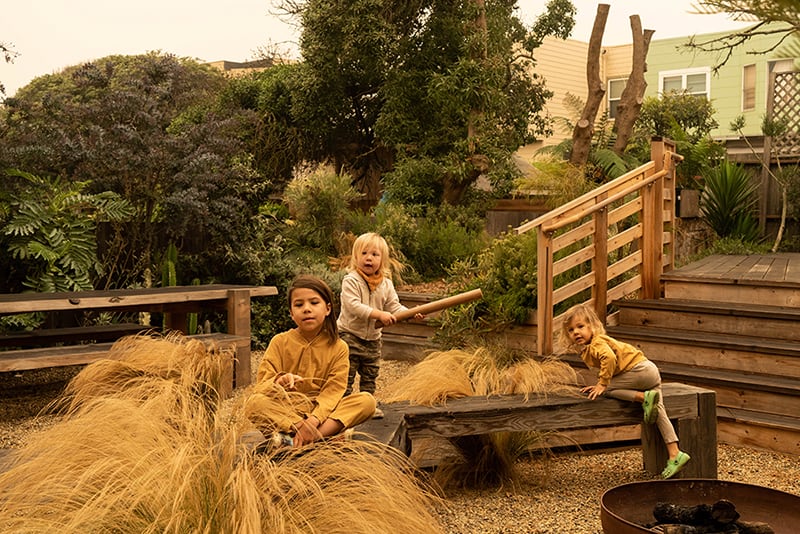
How has the concept of home and indoor/outdoor living changed for you during COVID times?
“The concept of home has changed entirely for me during COVID. I said goodbye to the garden I built that started this journey of OR.CA in a challenging acceptance of impermanence. Building something and letting it go—whether a child, a relationship, or a garden—is one of the most powerful processes we undergo as humans.”
“At the start of COVID, I read a quote by Georgina Reid (The Planthunter) that read: Right now, amid grand disorder and change, we have an opportunity to dream and create new patterns of being. Patterns that might help shape our future as a species. Where do such things grow, you ask? From the earth of course. In reading this, I saw my own work to be done around the creation of ‘home’ and dove deep into personal patterns in design, community, and impermanence.”
For more on OR.CA Design and to shop its products, be sure to follow @orcaliving on Instagram and check out orcaliving.com.
Share this story


